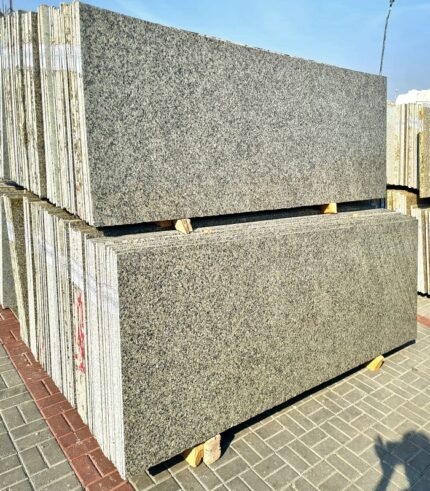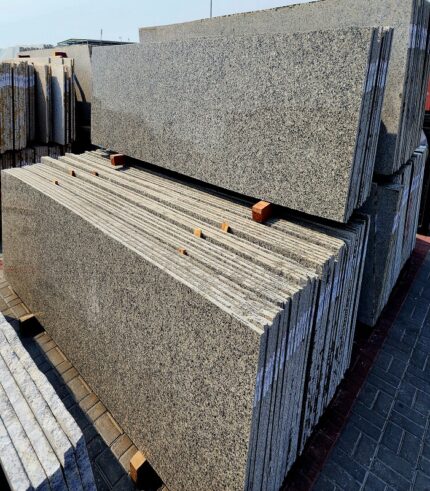Desert Brown Granite is a type of natural stone that is quarried in the Indian state of Rajasthan. It is also known by other names such as Desert Brown India, Desert Brown Royal, and Brown Desert Granite. This granite is formed by the slow cooling and solidification of magma deep beneath the earth’s surface.
This Granite has a warm brown background with black, white, and gray speckles scattered throughout the stone. The pattern of speckles can vary from stone to stone, making each piece unique. It has a medium to coarse grain size, and a polished finish highlights the natural beauty of the stone.
This granite is a popular choice for kitchen countertops, flooring, and wall cladding. Its durability and resistance to heat, scratches, and stains make it ideal for high-traffic areas. It is also commonly used in outdoor applications such as paving stones, pool coping, and landscape features.
Brown Granite is available in different sizes and thicknesses, and it can be cut and shaped to fit any project requirements. It is a versatile and elegant stone that adds warmth and sophistication to any space.
- Composition: It is primarily composed of quartz, feldspar, and mica. The exact proportions of these minerals can vary, which affects the stone’s appearance.
- Origins: This granite is primarily quarried in the Jalore district of Rajasthan, India. Rajasthan is known for producing a wide range of high-quality natural stones, including granite, marble, and sandstone.
- Colors and patterns: It typically has a mix of brown, black, and gray speckles, with occasional white or beige flecks. The overall appearance can range from light to dark depending on the lighting and surrounding decor.
- Maintenance: Like all natural stones, This Granite requires regular maintenance to keep it looking its best. It should be sealed periodically to prevent staining, and spills should be wiped up promptly. It’s also important to avoid harsh cleaning products that can damage the surface.
- Applications: In addition to countertops and flooring, Brown Granite can be used in a variety of other applications, such as backsplashes, fireplace surrounds, and shower walls. It’s a versatile stone that can complement many different styles and colors.
- Availability: Desert Brown Granite is widely available from Indian suppliers and distributors, and it’s a popular export to other countries as well. This means that it’s often more affordable than other types of granite and can be a good choice for budget-conscious projects.
Technical Specifications for Desert Brown Granite from India :
- Density: The density of this Granite is approximately 2.7 grams per cubic centimeter (g/cm3).
- Water Absorption: The water absorption rate of Desert Granite is low, typically less than 0.5%. This means that it is resistant to water damage and staining.
- Compressive Strength: The compressive strength of Desert Brown Granite is high, typically ranging from 150-250 MPa (megapascals). This makes it a very strong and durable stone that can withstand heavy use and weight.
- Tensile Strength: The tensile strength of Desert Brown Granite is moderate, typically ranging from 10-20 MPa. This means that it can withstand some bending or pulling force, but it is not as flexible as other materials.
- Flexural Strength: The flexural strength of It is also moderate, typically ranging from 10-20 MPa. This means that it can withstand some bending or curvature without breaking, but it is not as flexible as other materials.
- Abrasion Resistance: The abrasion resistance of this Granite is high, meaning that it is resistant to wear and tear from foot traffic, furniture, and other sources of friction.
- Frost Resistance: Brown Granite is not recommended for use in areas with frequent freeze-thaw cycles, as the expansion and contraction of water can cause cracking and other damage.
- Chemical Resistance: It is generally resistant to most chemicals, including acids and alkalis. However, it should still be protected from exposure to harsh chemicals to avoid any potential damage or staining.
These technical specifications may vary slightly depending on the specific quarry and processing techniques used to extract and finish the stone.


